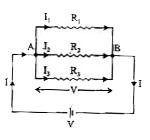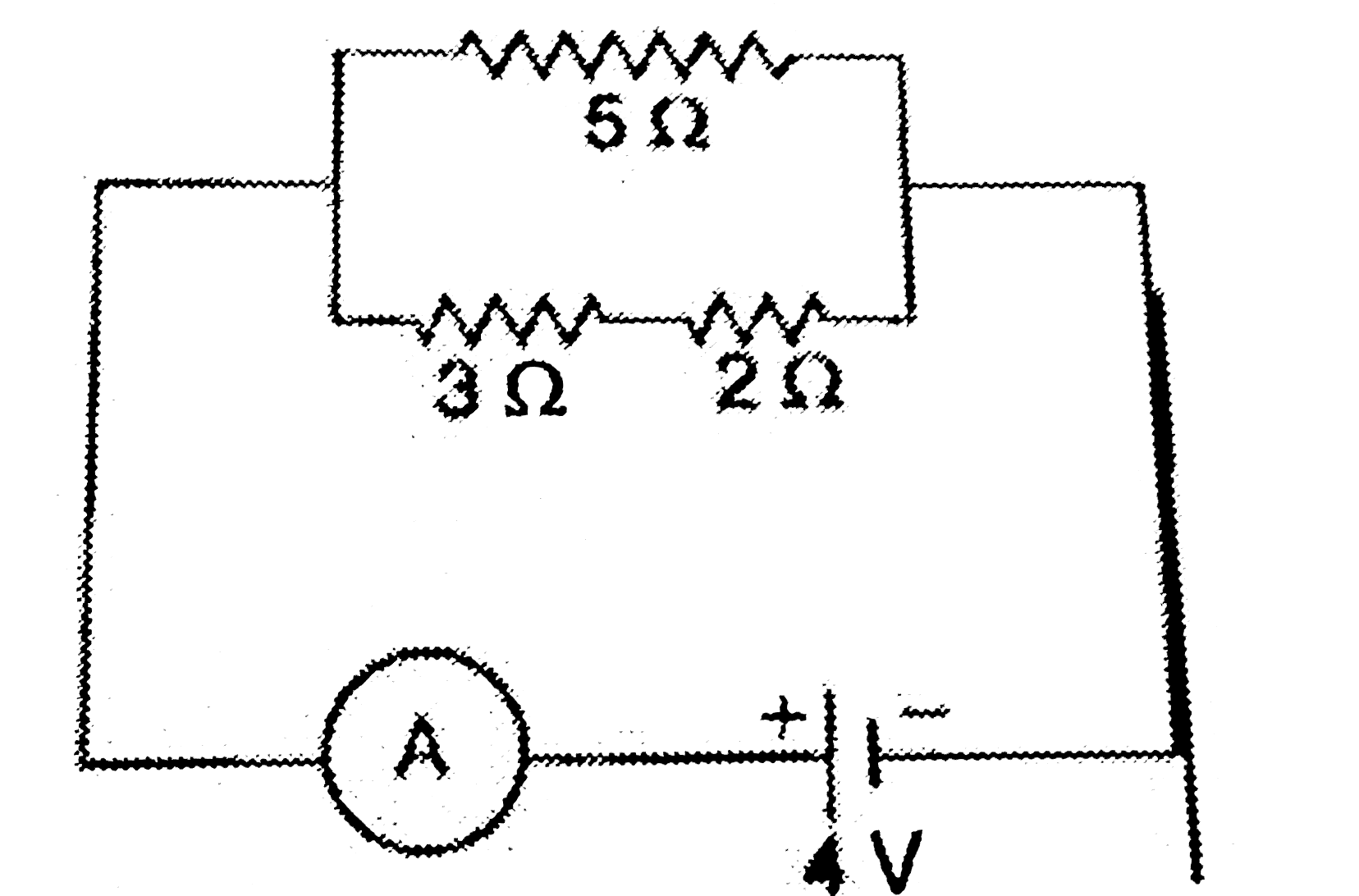Find the total resistance of a circuit , in which threee resistances are connected in parallel .
Two or more resistors are said to be coneected in parallel , if the potential differnce across each of them is the same and is equal to the applied P . D .

Consider three resistors of resistances R1,R2andR3 respectively connected in parallel .
Let V be the potential differnce across each resistor .
The current I drawn from the cell divides into three
parts at junction point A . Let current I1,I2andI3 flow though the the resistors R1,R2andR3 respectively .
Then I=I1+I2+I3 ,
Here I1=VR1,I2=VR2andI3=VR3
I=VR1+VR2+VR3
I=VR1+VR2+VR3
I=V(1R1+1R2+1R3)
If RP is the effective or equivalent resistance of the parallel combination , then
I=VRP
Hence eqn . (ii) becomes VRP=V(1R1+1R2+1R3)
1RP=1R1+1R2+1R3 .....(iii)
Similar Questions
Knowledge Check
Total resistance of the circuit:
 A10ΩB20ΩC5ΩD15Ω
A10ΩB20ΩC5ΩD15ΩThe effective resistance of three equal resistances, each of resistance r, connected in parallel, is
A3/rBr/3C3rDr3The effective resistance of a circuit containing resistances in parallel is
Aequal to the sum of the individual resistancesBsmaller than any of the individual resistancesCgreater than any of the individual resistancesDsometimes greater and sometimes smaller than the individual resistances
(a) With the help of a circuit diagram, obtain the relation for the equivalent resistance of two resistances connected in parallel.
(b) In the circuit diagram shown below, find:
(i) Total resistance.
(ii) Current shown by the ammeter A

View SolutionA circuit consists of a capacitor with capacitance C and a coil with active resistance R and inductance L connected in parallel. Find the impedane of the circuit at frequency ω of alternating voltage.
View SolutionThe Total resistance when connected in series in 9Ω and when connected in parallel is 2Ω The value of two resistance are
View SolutionA 24 volt battery is connected to the arrangement of resistances shown in (Fig.) Calculate
(i) the total effective resistance of the circuit,
(ii) the total current flowing in the circuit.
 .
.
View SolutionThe Total resistance when connected in series in 9Ω and when connected in parallel is 2Ω The value of two resistance are
View Solution
